How to Invoice as a Freelancer: Key Components and Template
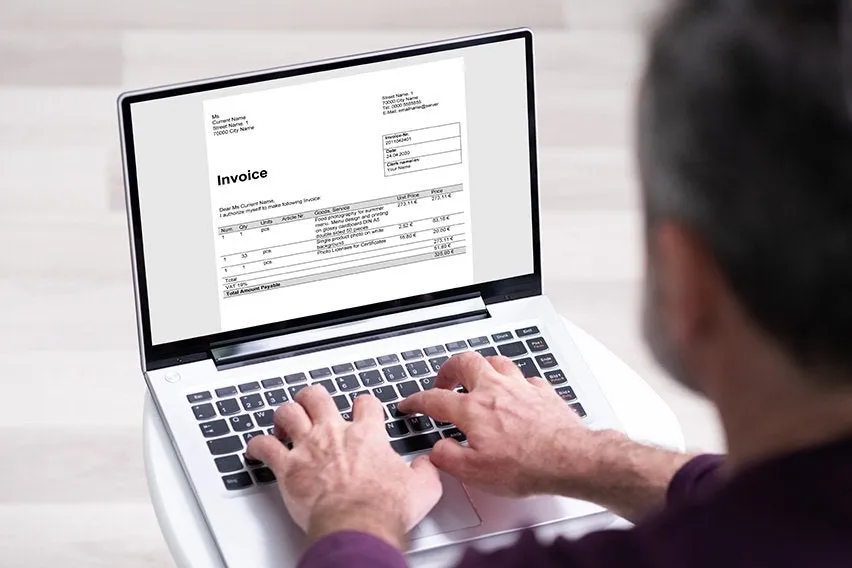
As a freelancer, you have the unique challenge of being entirely responsible for getting paid for your own business. There’s no employer to handle payroll on your behalf, meaning you have to track your own job costs, send invoices, and handle payments on your own. Effective invoicing is absolutely essential for freelancers, ensuring timely payments from customers, steady cash flow, and strong professional relationships with clients.
In this guide, we’ll cover everything freelancers need to know about invoicing, including the details you should include on your invoice, how to send an invoice, and handy tips to help you save time on this important task.
Key Takeaways
- Invoices should include contact information, invoice number, line item descriptions, total due, issue date, due date, payment terms, and any additional fine print.
- You can save time by using a premade invoice template, such as the one from FreshBooks.
- Invoicing software makes it easy to deliver invoices to your clients, ensuring you get paid quickly.
- By following invoice best practices, you’ll save time, preserve professional relationships, and get paid sooner.
- FreshBooks invoice software is designed to speed up invoicing for freelancers with automated tools and seamless software integrations.
Table of Contents
- Key Components of How to Write an Invoice for Freelance Work
- Download a Ready-to-Use Freelance Invoice Template from FreshBooks
- How to Send an Invoice as a Freelancer
- 6 Invoicing Tips For Freelancers
- Get Paid Faster with FreshBooks
Key Components of How to Write an Invoice for Freelance Work
Contact Information
Make sure to include your name (or business name, if applicable) and address on the invoice. Include your email and phone number, in case the client wants to contact you. Add in a company logo, if you have one, to make your invoice look more professional.
Your client’s contact information should also be listed. If you know the person who reviews their invoices, you should include their name.

An Invoice Number
Whether you use accounting software that generates invoices or you create them manually, you should always be tracking your invoice numbers. As a freelancer, you might have to answer client questions about your work or track down late payments.
Having organized records of invoices will help you answer those questions when they come up. An invoice number will help the client and you know that you are talking about the same transaction.
The Issue Date and Due Date
The date the invoice is issued is when the payment timeline starts, so it is so important to include the invoice date. If for some reason you incorrectly numbered your invoices, referring to the issue date can also help distinguish one invoice from another.
Also, remember to include your due date for payment. This is the number of days payment is due after the issue date. This will depend on the terms you have established with your client in your contract or agreement, but common terms are: due on receipt, net 15, net 30, or net 60.
Line Item Description and Total Due
The most important information on the invoice is the breakdown of the goods and services provided. List each item separately with a description of the services rendered or the goods you provided, the quantity of that product that was provided, the rate of that product or service, and a clear total amount due.
Payment Methods
Make it as easy as possible for your clients to pay you. Include options for how clients can get payments to you, along with any necessary payment terms or related information.
If you accept checks, make sure to clearly indicate an address they can send that check to. Also, include any email associated with your business’s PayPal account or bank information for bank transfers.
You could also use payment software that allows you to accept other payment methods like credit cards, but there’s often a fee associated with such payments.
Additional Fine Print
Include other fees, applicable discounts, or fine print points that need clarification at the bottom of your invoice. This could be related to fees for late payments or discounts offered for early payments.
Download a Ready-to-Use Freelance Invoice Template from FreshBooks
One of the best ways to save time and ensure professional, consistent invoices is by using a ready-made template. The freelance invoice template from FreshBooks is a great tool for busy entrepreneurs, with all the essential fields already there in a professional invoice format.
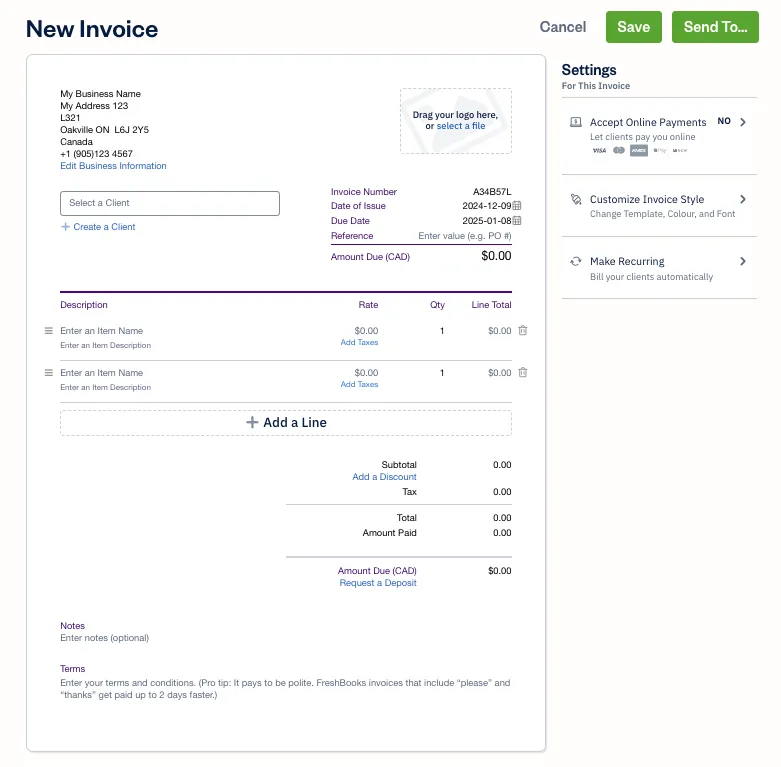
Simply enter your contact information, your client’s information, invoice number, payment terms, payment options, and due dates, save the modified free invoice template and send it to your clients. Our invoice templates are also highly customizable, letting you add your logo and other branding elements with just a few clicks. This freelance invoice template is a great way to spend less time on invoicing, helping to ensure prompt payment.
How to Send an Invoice as a Freelancer
The most common way to send an invoice is by email as a PDF attachment. This is a simple and convenient option for both you and your client. However, if you need to send a more formal invoice, you can consider sending a hard copy via certified mail.
Regardless of the method you choose, it’s important to keep a copy of the invoice for your records. This will help you track your payments and resolve any disputes that may arise.
For the easiest and most organized way to send invoices, consider using accounting software. Many accounting software platforms, like FreshBooks, have built-in invoicing features that allow you to create, send, and track invoices electronically. With FreshBooks invoicing software, you can simply generate the invoice, add all the necessary details, and hit the ‘Send To…’ button to either send it directly via email from within the platform or get a link that you can copy and send via other methods. This streamlined process saves you time and hassle while ensuring your clients receive invoices promptly and can begin the payment process quickly, ultimately helping you get paid faster.
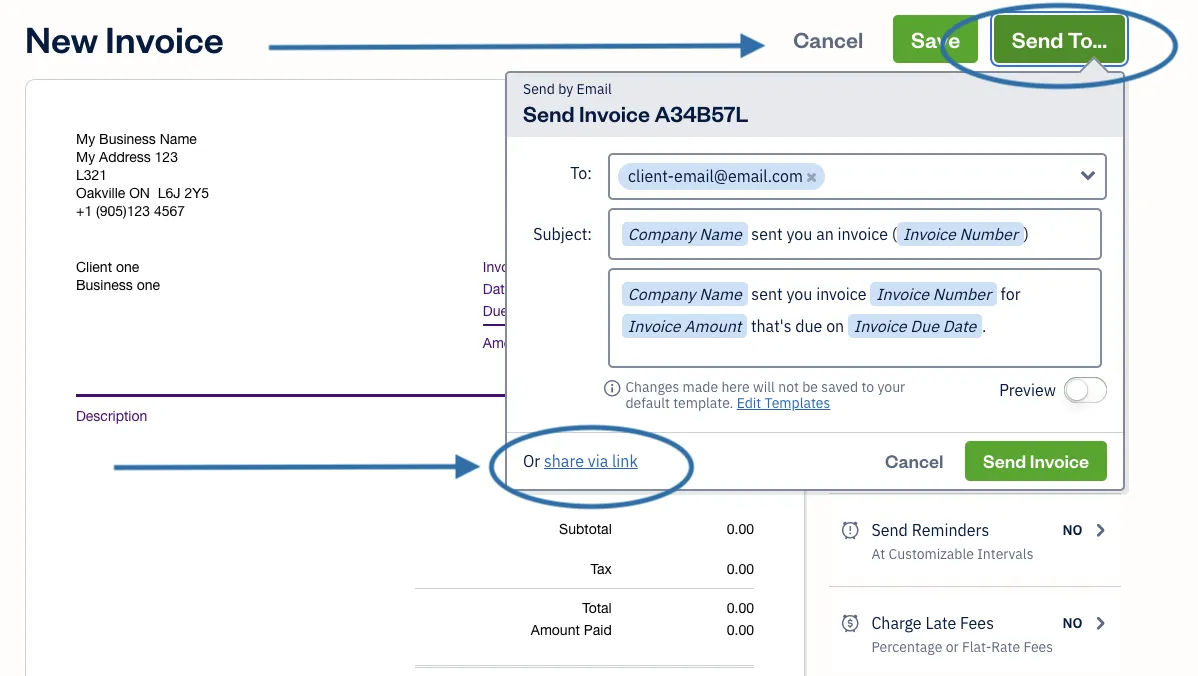
6 Invoicing Tips For Freelancers
As a freelancer, your independence from the corporate world comes with the added responsibility of handling your own finances to make sure you are getting paid for the work you are doing. Sending invoices to your clients is a vital part of your freelance business, so here are some tips for sending a freelancer invoice.
Review Your Contract
Before you start work with a client you should have outlined the details of the work you were planning on doing for the client and the amount of money the client is expected to pay you for that work. This should have been outlined on a freelancer agreement, contract or work offer. One of the most common reasons that freelancers are not paid is that the request for payment did not quite match the original contract terms.
Carefully review the terms on your freelance contract and decide whether:
- You met the required deadline
- Discussed payment methods
- Discussed payment timelines
Make sure you keep track of your initial contract so that you can be sure to follow all agreed-upon terms when you are creating the invoice.
Describe Your Work
Your client could be dealing with multiple freelancers, so make sure you are clear in your description of the work you are providing to your client. In your invoice provide a detailed description of the assignment and include identifiable information like your company name, the assigned date, due date, and contact details. This will help ensure that you receive payment sooner because it will eliminate client clarification. For tips on getting invoices paid quicker, follow our guide on How to Get Invoices Paid Faster.
Name Your Price
When you accept work from a client it is important to be clear about your pricing and payment options in your freelance contract or work offer. It is also important to be transparent about potential fees for things like edits or late payments. If the initial conversation about the work request was done informally in a conversation or over text message, send a follow-up documenting the agreement and specifying your pricing.
In your invoice make sure to clearly outline the work you have completed in itemized lines rather than grouping your work all together as “work completed”. If your client has to get approval for your work from someone at their company, this clarity will help that happen faster.
Include Taxes and Fees
Some freelance contracts are more complicated and might require out of pocket expenses or fees on behalf of the freelancer. If you incurred additional costs, be sure to include those items on your invoice. If you charge a fee for late payments, include that information on your invoice too.
Make sure to include and separately list any applicable taxes and that you understand tax rules for freelancers.
Follow Up
When you’re a freelancer it is so important to keep the lines of communications open with your clients. After you have sent your payment request with your invoice, make sure that you make it easy for a client to contact you about any questions regarding the invoice or your payment.
Deliver your invoice with a friendly email note or cover letter that includes a thank you in the body of it. This extra touch will go a long way! Open communication is also helpful when it comes to any additional follow-ups about overdue payments.
As your due date approaches, send friendly reminders and ask them if they have any questions or concerns about making the payment. In some cases, your invoice might have slipped through the cracks, so this friendly nudge is a good reminder for your client, too.
Use Invoicing Software
Using invoicing software can make the client billing process much easier for you. This will save you time and help you stay organized with your invoices. FreshBooks invoicing software is one great option. It enhances the entire invoicing process with several features, including automatic invoice numbering, automated payment reminders for your clients, charging late fees, and integrating seamlessly with other FreshBooks software products.
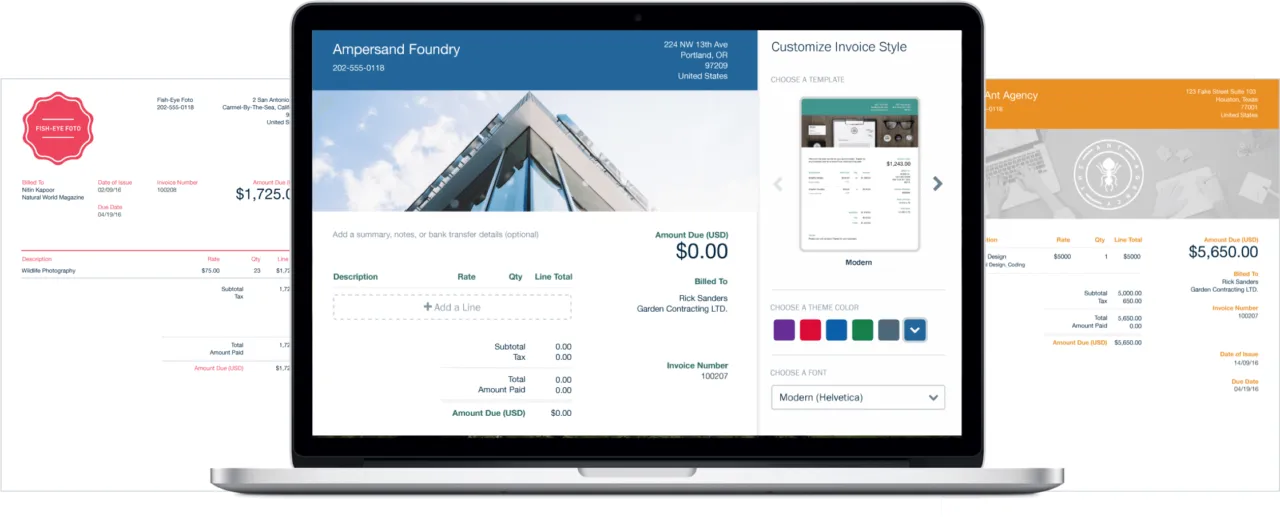
This means that your invoices can be automatically accounted for in your accounting software, and you can even accept online payments from clients using FreshBooks payments powered by Stripe. Overall, this invoicing software is designed to make life easier and more efficient for busy freelancers, helping them have more time to run their business instead of working on the administrative side.

Get Paid Faster with FreshBooks
Invoicing should be the easiest part of your job—after all, the work is already complete, and all that’s left is to send your bill and get paid. But for many, the invoice payment process becomes a tedious, time-consuming task that eats up hours of time each week, leading to late invoices, late payment fees, and financial uncertainty for busy freelancers. Fortunately, there’s a way to simplify professional invoices and make this task as easy as it’s supposed to be.
FreshBooks streamlines the entire freelancer invoicing process from start to finish. It includes countless features, like recurring invoice capabilities, multiple payment options, the ability to send multiple invoices, easy payment tracking, and customizable, professional-looking invoices. It’s an all-in-one package designed to simplify invoicing for busy freelancers like you. Plus, you can ensure timely payments using FreshBooks Payments powered by Stripe making it easier to manage your finances, ensure steady cash flow, and free more time for growing your freelance business.
About the author
Michelle Payne has 15 years of experience as a Certified Public Accountant with a strong background in audit, tax, and consulting services. Michelle earned a Bachelor’s of Science and Accounting from Minnesota State University and has provided accounting support across a variety of industries, including retail, manufacturing, higher education, and professional services. She has more than five years of experience working with non-profit organizations in a finance capacity. Keep up with Michelle’s CPA career — and ultramarathoning endeavors — on LinkedIn.
RELATED ARTICLES


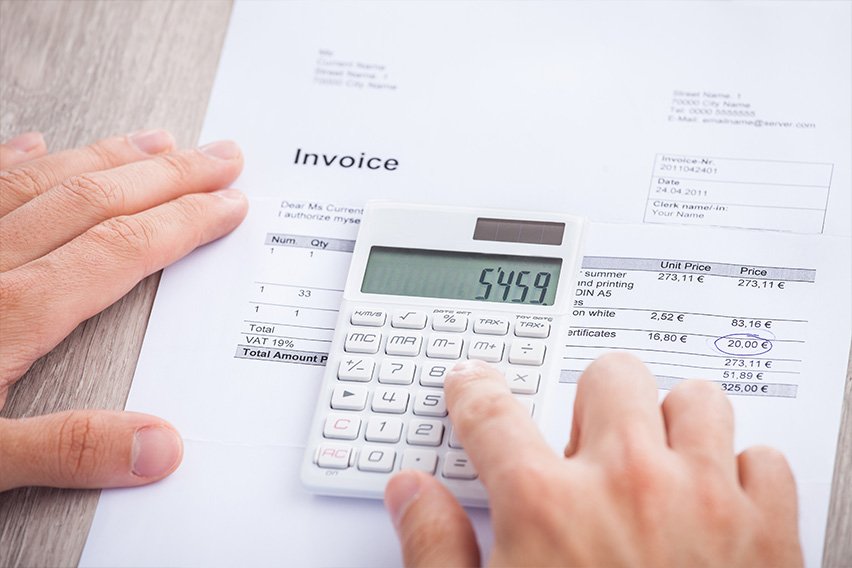 How to Make a Sales Invoice and Get Paid Faster for Your Goods Sold
How to Make a Sales Invoice and Get Paid Faster for Your Goods Sold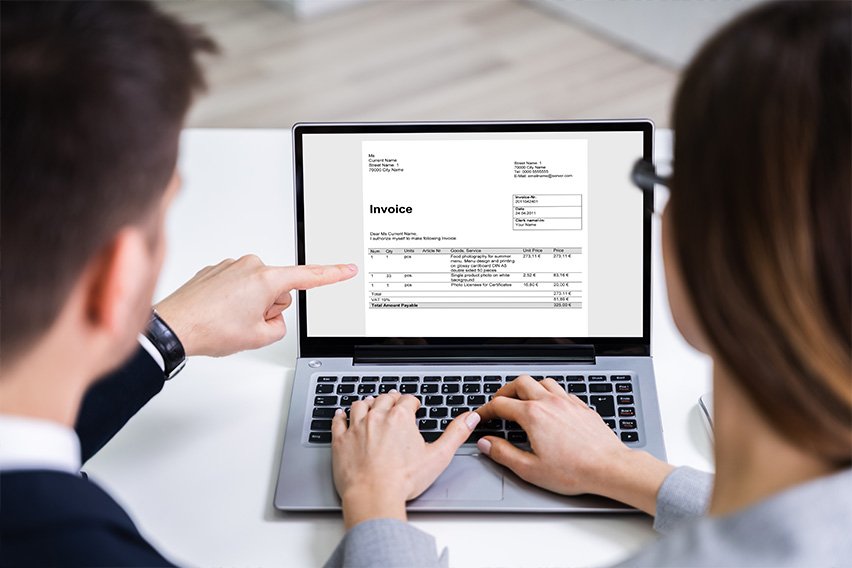 How to Make a PDF Invoice? Steps Explained
How to Make a PDF Invoice? Steps Explained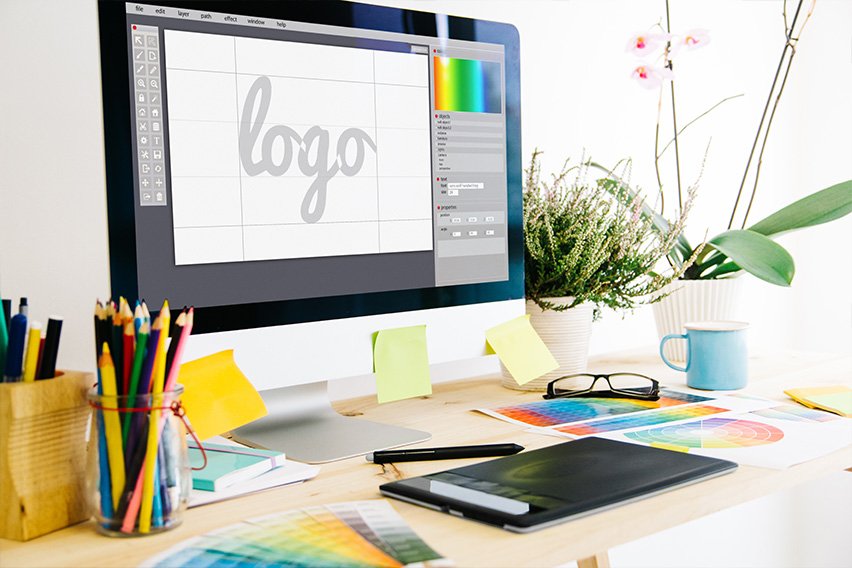 How to Invoice as a Freelance Designer: A Step-By-Step Guide
How to Invoice as a Freelance Designer: A Step-By-Step Guide How to Make a Service Invoice and Get Paid for Your Work
How to Make a Service Invoice and Get Paid for Your Work Late Payment Fee: How to Charge Late Fees on an Invoice
Late Payment Fee: How to Charge Late Fees on an Invoice Is an Invoice a Contract? How To Create a Legally Binding Contract
Is an Invoice a Contract? How To Create a Legally Binding Contract